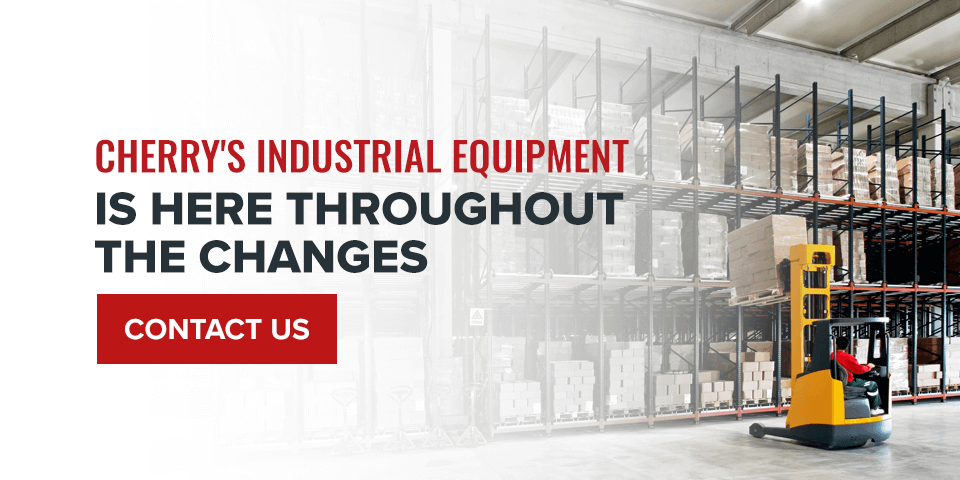Industry Trends for Warehousing, Shipping and Distribution
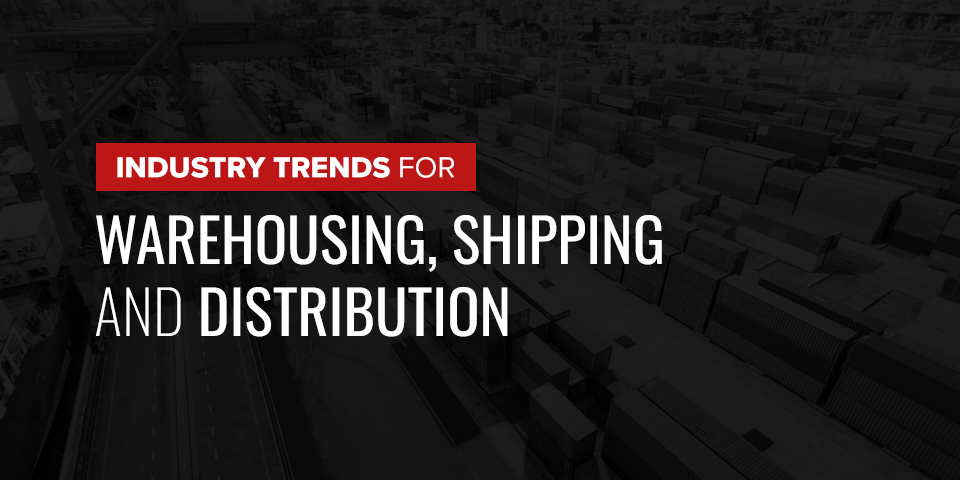
Technology is changing the warehouse, distribution and shipping industries. These fields are not immune to advances. However, this does not mean progress has set the future of the warehousing industry in digital stone. Industry professionals can make a sound case for retaining tried-and-true equipment and methods in certain situations. Incorporating some of the latest innovations may help your facility improve operations, but you may want to wait before fully embracing the latest technology. High-tech trends may not benefit your facility.
Jump To:
- Warehousing Trends for the Upcoming Year
- What’s New in Warehousing?
- Warehouse Automation and New Technologies in Warehousing
- Labor Shortages
- Distributed Inventory
- Automation
- Warehouse Safety and Best Practices
- Warehouse Management
- Improving Order Fulfillment and Goods Distribution
- Better Transparency
- Security Improvements
- Internet of Things
- Decreasing Delivery Times
- Cherry’s Industrial Equipment Is Here Throughout the Changes
Warehousing Trends for the Upcoming Year
Warehouse industry trends for the near future include technological innovations such as drones and robots. However, using mechanical labor adjuncts in the industry does not mean all facilities must embrace the technology. The reasons behind the drive for incorporating technology are more important than the newest devices. Warehouse, shipping and distribution industry trends all use ways of integrating technology to improve operations. The most important things in the future of supply chains include increasing transparency, reducing delivery times, improving order fulfillment and making facilities safer.
You can adopt high-tech solutions to these, or opt for tried-and-true devices to help your facility improve in these areas. Keeping up with trends in the industry does not always need getting the latest electronic devices. With modest improvements to your warehouse and its equipment, you can improve your operations while keeping your facility profitable into the future.
What’s New in Warehousing?
Some of the latest innovations are not part of warehouse industry projections. Changes that make things better may not always make it to trending lists, especially if the recent technologies are not internet-based — the goals of reducing costs, improving productivity and becoming more efficient remain. How you use the existing and novel products available to achieve these goals depends on your facility.
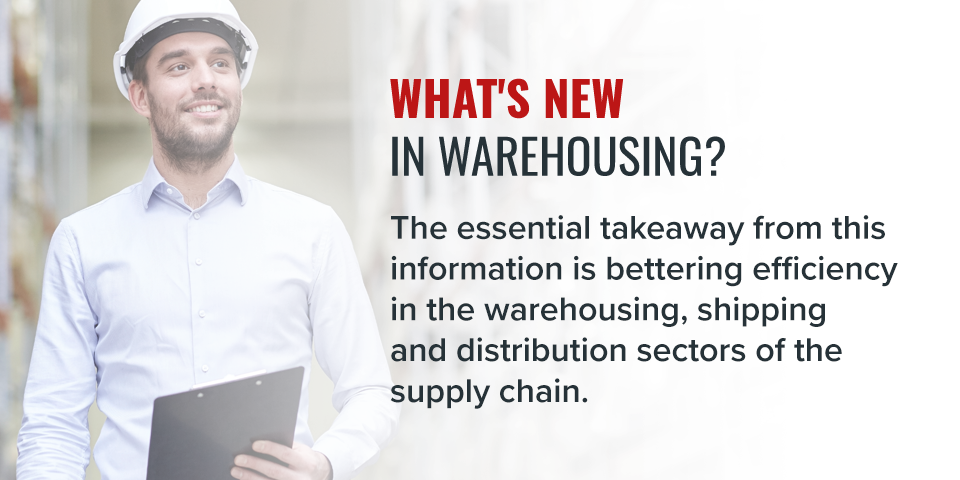
The essential takeaway from this information is bettering efficiency in the warehousing, shipping and distribution sectors of the supply chain. How you increase efficiency depends on your existing facility. If you need to upgrade your equipment to more reliable, longer-lasting products, doing so could be your contribution to this trend. Some facilities have reached peak efficiency with their existing products and may want to incorporate more technology. Both options bring warehouses up to date by improving the need for higher productivity.
Warehouses are changing inside and out. You may need to reassess how you use the space to continue to ensure the profitability of your facility. Across the country, standard storage spaces are changing to meet the demands of consumers who need faster deliveries. Some warehouses are expanding to store products from multiple sellers under a single roof as a massive distribution center. In Calgary, one such facility exists. The selling point of this logistic center is its proximity to transportation via both highways and rail. Like other super-sized distribution centers, the one in Canada features more than 600,000 square feet of space.
Other facilities embrace smaller designs than these large-scale super distribution centers. Smaller warehouses have a higher density in urban areas, where they help reduce delivery times by keeping the products close to customers. This model of increasing the number of small warehouses used to distribute goods is part of Amazon’s model to cut delivery times.
Niche warehouses, such as those with cold storage or tightly controlled climate storage, help improve profits in the given space for existing facilities. Locating temperature-controlled warehouses near customers also helps cut shipping costs while increasing the value of the facility due to the higher profits from the cold-storage goods.
Warehouse Automation and New Technologies in Warehousing
Automation is slowly increasing in use in warehouses across the country. Robots are part of this movement, due to their flexibility. These automatic devices can retrieve products from shelves or convey products to the loading area. Some robots still need human workers to teach them how to pack customized orders.
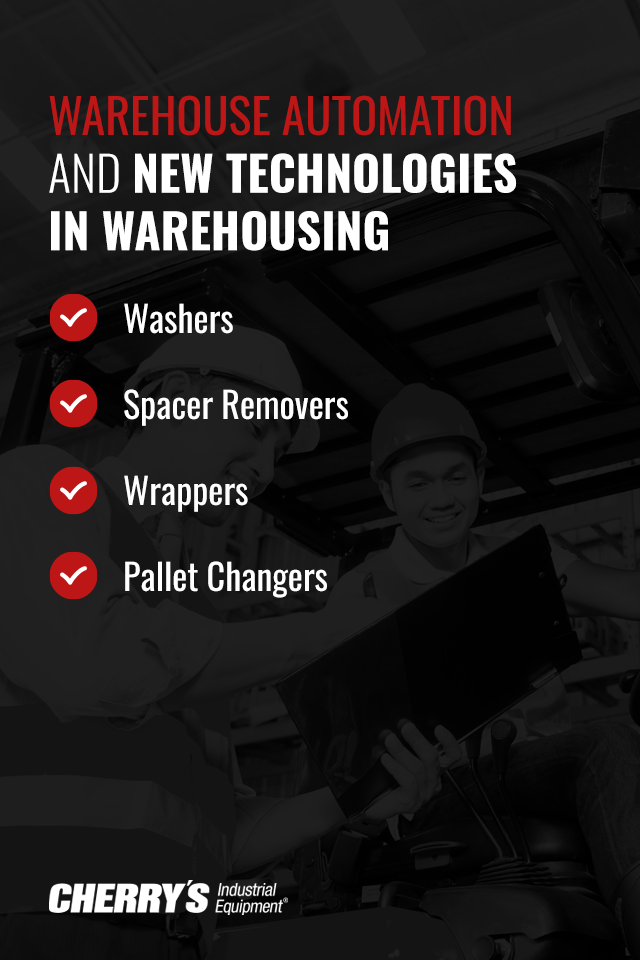
Another way robots can help in future warehouses is with drones. Drones are flying robots equipped with cameras. In large warehouses, drones can fly up to high shelves for inventorying by scanning the RFID tags on containers. Per drone manufacturers, scanning reaches 100 percent accuracy. To fully embrace this technology, warehouse owners need assurance of the safety of the drones, as well as their efficiency.
Robots are not the only new warehouse technologies available. Several means exist to help you automate your warehouse without having robots on the floor or in the air. Don’t shun automation. You can make your facility more productive and efficient while protecting your workers from danger by incorporating automatic devices into your warehouse. Combining more in-line solutions to tasks your workers already do can increase productivity while reducing the time many chores need.
- Washers: In-line automated pallet washers and dryers can clean up to 100 pallets an hour, far outstripping the number of pallets a person could manually wash.
- Spacer removers: Another method to automate tedious processes involves using an in-line spacer retriever. This device removes spacers between items on a pallet and automatically diverts the pallet to a wrapper. A spacer remover is especially useful if you have a cold-storage facility and want a faster way of getting pallets ready for shipping.
- Wrappers: Automatic wrappers cover pallets in plastic wrap faster and tighter than people can. These automatic devices can boost productivity by up to 20 percent.
- Pallet changers: Using load changers can help speed along your operations by making faster changes between pallets. Some models of load changers can shift loads of up to 60 pallets an hour. There are even fully integrated conveyor models that dispense the new pallet and transfer the load automatically.
Another technology for your warehouse is as close as your pocket. Cell phones have become more powerful. Now, smartphones have the capability of quickly and accurately scanning inventory and connecting it to your warehouse management system, or WMS. The future of the distribution industry will include more digital technology and less use of pen and paper for data collection. In 2018, only 12 percent of warehouse operators said they planned to continue use of pen and paper for warehouse data collection. The same survey showed 51 percent of responders would use top-of-the-line WMS programs. Integrating your data into a WMS will help you more accurately track your inventory.
Labor Shortages

Labor problems will continue to grow over time throughout the shipping, distribution and warehousing industries. The demand for truck drivers is increasing, but the number of people available to fill the jobs has not kept up. This discrepancy will drastically affect the future of the shipping industry. In the next two decades, up to 50 percent of current truckers will reach retirement age. This high retirement rate without a balancing enrollment in the industry could lead to a possible shortage of 174,000 drivers by 2026. Akin to the problem of not enough drivers is the excessive cost of transportation. Of those surveyed, 42.7 percent reported the need to lower transportation costs as a major cause of the need to improve the industry. Industry professionals need to rethink their delivery methods to mitigate the problem.
A couple of ways to overcome labor shortages include distributed warehouses and automation. While these solutions will not completely remove the need for human laborers, they can lessen the impact of the labor shortage in the industry. Before you can integrate these ideas into your business, you will need to understand both what they are and their implications.
Distributed Inventory
Amazon has pushed the envelope for what consumers expect. Among the possible distribution trends for the upcoming year is the idea of distributed inventory. Unlike traditional businesses that keep all their products in a single warehouse, distributed stocks spread out their goods through warehouses across the country. By having multiple facilities, shipping times reduce drastically because the suppliers ship the products from warehouses as close to the customer as possible.
While distributed inventory reduces shipping times and lowers transportation costs, it has a disadvantage for smaller businesses. Unless you have the capital to open multiple warehouses across the United States, you may not be able to fully embrace this practice. Those without the means of purchasing multiple warehouses may create agreements with existing warehouse owners to hold merchandise.
Automation
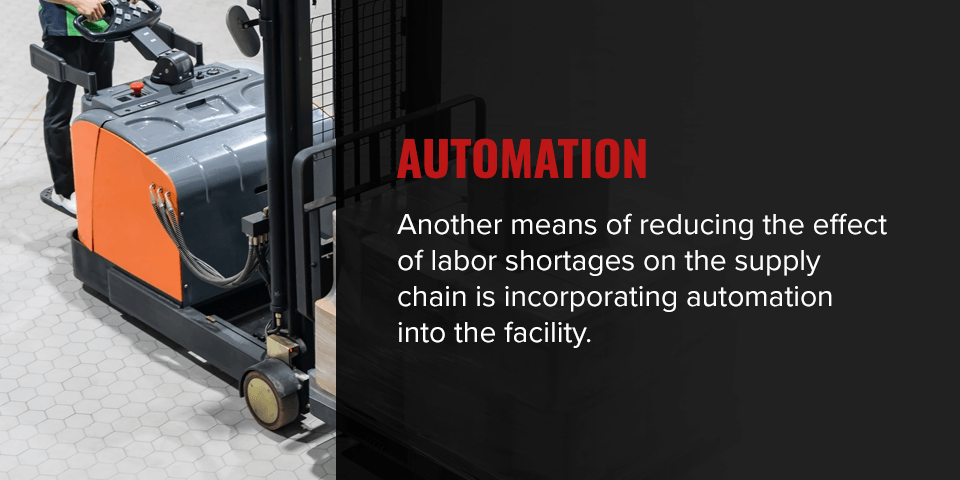
Another means of reducing the effect of labor shortages on the supply chain is incorporating automation into the facility. You do not even have to have fully automated systems with robots and other human replacements. Instead, use devices that make work faster and easier for your existing employees so they can become more efficient. For example, automatic stretch wrappers create tighter wrapping than humans can, while working more quickly. This wrapper is one device any warehouse or facility can incorporate into its operations to improve productivity.
To ease the problem of truck driver shortages, some firms are developing new shipping technologies that incorporate autonomous vehicles. Autonomous vehicles operate without an active driver. One company has used self-driving trucks to drive the desolate stretch of 650-mile highway between Texas and California. To navigate through the more difficult traffic near its destination, the vehicle gets a skilled driver to finish the route. While this technology still needs humans behind the wheel at some point in the journey, in the next few decades, autonomous trucking could be a frequently used delivery method.
Warehouse Safety and Best Practices
Maintaining a safe working environment and implementing best practices will also help you to improve the efficiency of the workers you currently have. With better safety, your employees will lose less time from injuries, and better practices throughout your facility will increase their productivity.
Warehouse Management
Managing your warehouse will progress beyond paper-and-pencil data keeping. If you don’t already use a warehouse management system, consider having this software installed. It can maximize your facility’s productivity while keeping track of inventory.

Management systems keep track of orders and inventory. From the time a product enters your warehouse until it leaves, it becomes a piece of information the WMS tracks. Some full-featured WMS programs also will track shipping and stops along the way. Other types of WMS are cloud-based. When a system stores information in the cloud, the system allows for data access from anywhere online. To keep the information secure, many cloud-based systems use passwords and other credentials to ensure only qualified people can access the information.
The goal of a WMS is to improve your warehouse’s operations by streamlining every process. Because these systems are so effective at doing this, they are increasing in popularity in warehouses and distribution centers across the country. If you need better accuracy and inventory tracking, consider WMS software or an upgrade for your existing WMS.
Improving Order Fulfillment and Goods Distribution
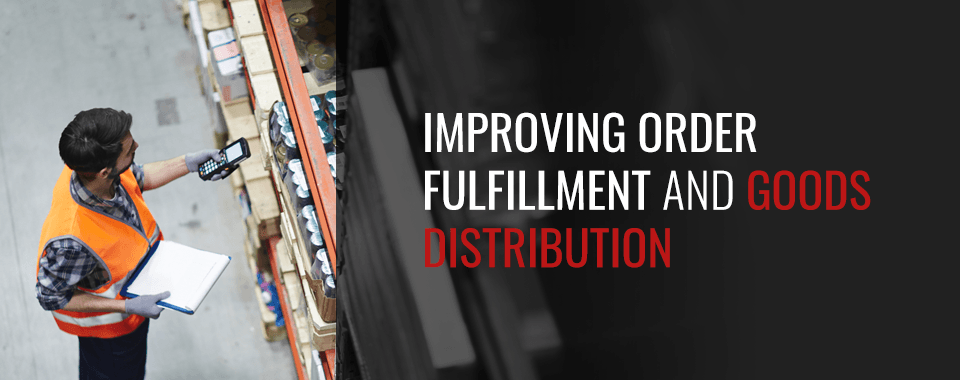
Take a careful assessment of your facility. Are there ways you can improve the speed and accuracy of picking orders? One way to improve speed within your facility is by enhancing the use of space. Remove any obstacles in your employees’ paths, such as stacks of pallets or parked lifts. You can organize your pallets in one spot without worrying about a pile collapsing with a pallet or container dispenser. These devices store and dispense pallets with less strain for your workers, protecting them from injury while keeping your facility tidy.
Another way to improve your facility’s operations without diving headfirst into the latest, untested technology is to replace older wooden pallets with reusable, durable plastic pallets. If you have a warehouse with strict cleanliness codes, plastic pallets are a better choice than wood. Plastic pallets provide a great return on investment. With a quick wash and dry, you can reuse them. With more durable pallets, you won’t have to worry about the pallets breaking under loads, wasting time for your employees and putting them at risk of injury.
Better Transparency
Visibility throughout the supply chain to improve efficiency will be one of the trends for this year, according to the CEO of a logistics company. The location of products from origin to destination is a growing demand among consumers. Social responsibility and the need to be good stewards of people and the planet partially drive this petition for visibility. Shipping trends for the upcoming year have included companies such as Walmart advertising their reductions in greenhouse gases from their suppliers.
Tracking your suppliers for the inventory you deal with may need software upgrades in addition to working with your suppliers to improve transparency. Making your own facility more sustainable by implementing natural lighting, cutting water use and lowering carbon emissions will also help your facility become a partner with others who work to improve the planet.
Security Improvements

While connectivity and cloud-based software can help improve your warehouse’s efficiency, these conveniences expose a vulnerability in the supply chain. Cybercrimes such as hacking are increasing. In the National Counterintelligence and Security Center’s (NCSC) 2018 report on cyber-espionage, the group suggests the early implementation by multiple companies of a diverse range of software makes it harder to create security measures.
Additionally, threats don’t always come from the United States. The NCSC’s report outlines the potentially dangerous risks of hackers from other countries. By trying to take over American businesses’ computer systems, these cybercriminals are stealing trade secrets from American companies. In 2017 alone, reports of attacks on hacks into business software in the supply chain almost doubled compared to 2014 through 2016.
While the United States government works to reduce industrial and economic cyber-espionage from foreign and domestic criminals, facility owners can take part, too. If you have a software system connected to the cloud, ensure it is password protected. Also, protect your warehouse’s Wi-Fi signal with a password. Securing both can help close security loopholes.
You don’t have to be afraid of embracing WMS software or other management systems for your facility. However, you may need to hire a professional information technology expert to help you set up your software and ensure its security. As new distribution technologies emerge to make things easier, they will always come with some caveats for their use. With software, the advantages of better operations may outweigh the slight risk of a security breach. Using strong passwords may help reduce this risk.
Internet of Things
The Internet of Things, sometimes called Industry 4.0, refers to interconnected devices that run together based on the performance of other connected machines. For instance, sensors detect the pace of packing mechanism, which can adjust the speed of other machines feeding into the packer. Connecting devices to each other and operating software help a warehouse to reach its highest efficiency possible.
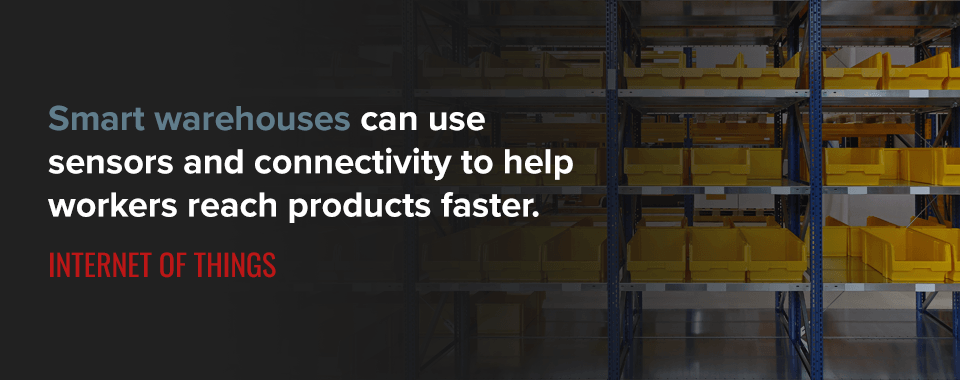
Smart warehouses can use sensors and connectivity to help workers reach products faster. Sensors detect how people move through the warehouse. The facility’s WMS uses this information to help direct workers’ actions to improve their efficiency. When loading trucks, IoT can direct workers to load products in the most efficient order for shipping. Distribution industry projections suggest a 15 percent increase in productivity by integrating IoT into future warehouses.
This elevated level of connectivity also benefits shipping and distribution. Shipping industry trends include the increased use of the Internet of Things, or IoT. For instances, some companies use an on-demand method for both warehousing and shipping. One American company, Convoy, pairs incoming deliveries with local trailers to improve transportation. Collecting shipment information to maximize loads on trailers or other freight carriers is one way IoT pushes the envelope in distribution.
Decreasing Delivery Times
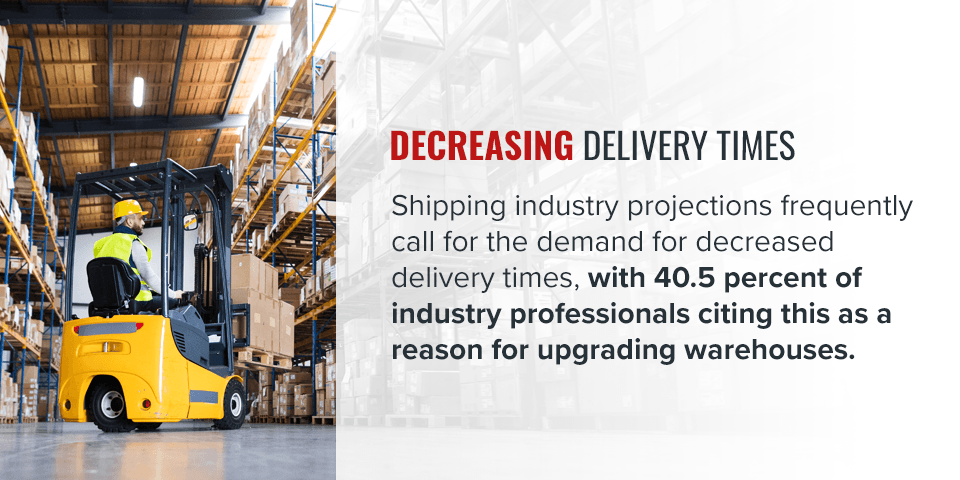
Shipping industry projections frequently call for the demand for decreased delivery times, with 40.5 percent of industry professionals citing this as a reason for upgrading warehouses. How you reduce your turnaround times depends on your current operations. There are many ways to cut the days required for delivery. One way is to use a distributed inventory. With the stock closer to the customers, delivery times drop from several days to just a day or two. This method of using larger distribution centers and a series of smaller urban warehouses to reduce distances between customers and products could become the distribution model of the future.
While looking at the practices of big businesses like Amazon helps inspire you to make changes, you do not have to model your facility on those companies. Reducing delivery times does not always need implementing new distribution technologies like IoT. It may merely require better planning and cutting the time it takes from a customer’s order to shipping. Rearranging your warehouse to improve efficiency and cut picking times can help lower the time until a customer gets his order. Optimizing loads can also increase your productivity while reducing delivery times.
Cherry’s Industrial Equipment Is Here Throughout the Changes
While warehouse innovations continue to evolve throughout the shipping and distribution industry, you can always count on us at Cherry’s Industrial Equipment to be here for our customers. We have solutions with a longstanding history of reliability as well as innovative options for the most modern facilities. Whatever type of warehouse you operate, you will find the equipment you need. Our products range from standard equipment to customized options.
Contact us at Cherry’s Industrial online or by phone, 800-350-0011, to experience our quality customer care and get quotes for our range of products. We’ve been around for decades giving our customers the excellent service they deserve and the products their facilities require. We continue to bring this high caliber of care to our customers today as we take our company into the future.
